Pruning Roses Boosts Plant Health And Airflow: ‘Don’t Be Afraid Of Making Mistakes’
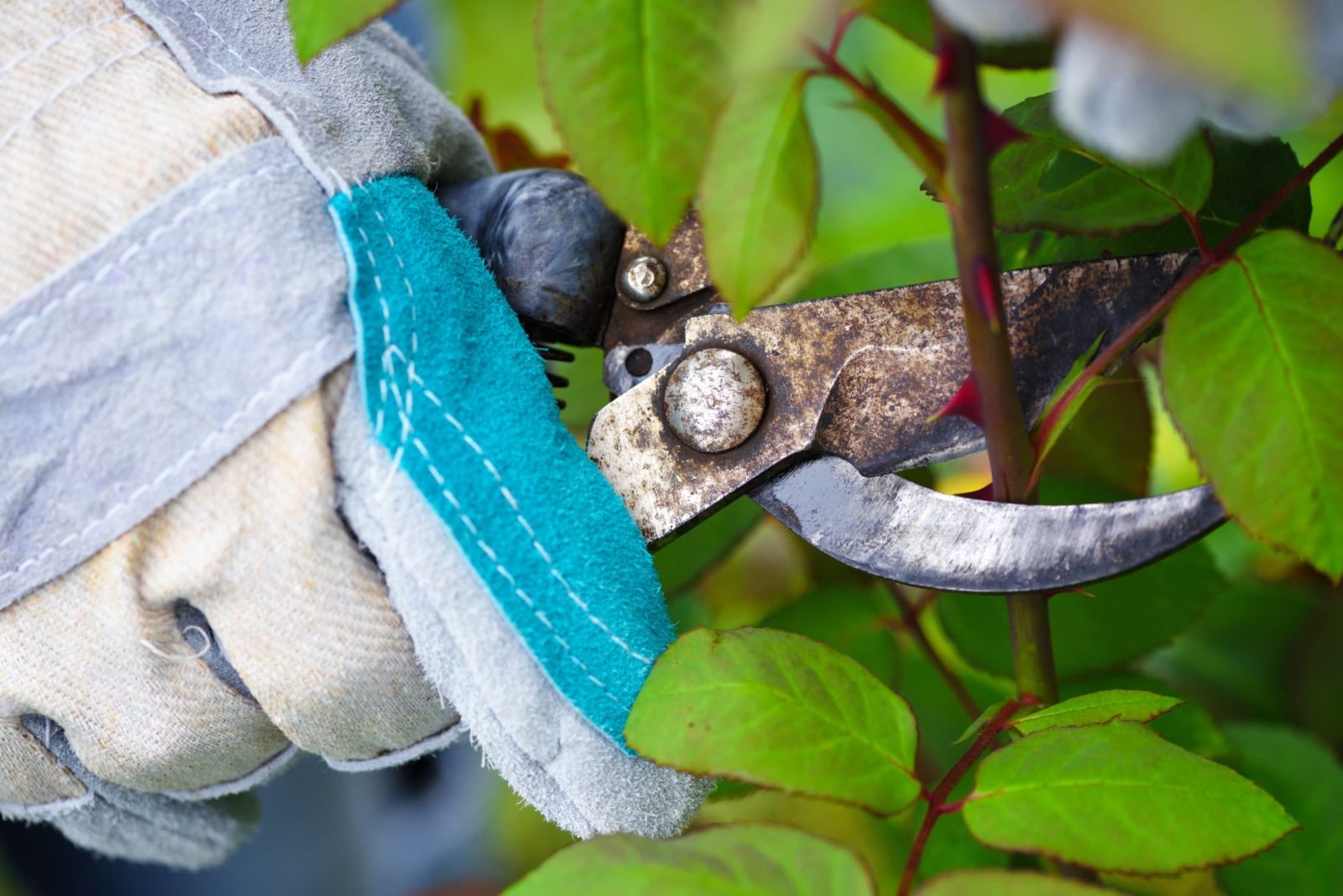
PERENNIALS > ROSES > PRUNING

Elizabeth is a Permaculture Garden Designer, Sustainability Consultant and Professional Writer, working as an advocate for positive change. She graduated from the University of St. Andrews with an MA in English and Philosophy and obtained a Diploma in Applied Permaculture Design from the Permaculture Association.
Reviewed By COLIN SKELLY

Colin is a Horticulturist and Horticultural Consultant with experience in a range of practical and managerial roles across heritage, commercial and public horticulture. He holds the Royal Horticultural Society’s Master of Horticulture award and has a particular interest in horticultural ecology and naturalistic planting for habitat and climate resilience.
Contributions From EMILY CUPIT

Emily is a Gardening Writer, Photographer and Videographer from Derbyshire, UK. She is the Founder of Emily's Green Diary - a community of more than 75,000 people who share in her gardening journey.

With over 45 years as a Co-Owner of Harkness Roses, Philip has made a name for himself in the rose industry. His plant nursery won gold medals at the Chelsea Flower Show in 2021 and have bred various new roses, including ‘The Duke of Edinburgh’ rose, which was handed to the Late HRH Queen Elizabeth II to commemorate what would have been her late husband’s 100th birthday.

As the Owner of Dickson Roses, a specialist nursery, Colin bred roses from 1977-2018, marking the end of the nursery’s 140-year tradition. Despite this, Colin still won Rose UK’s Rose of the Year award in 2022 for his rose ‘It’s A Wonderful Life’ - the 8th time Dickson Roses has received that particular accolade, which is lauded by the RHS.

Ben has been a professional gardener for over 20 years and is currently the nursery manager at Country Garden Roses. Country Garden Roses has been established for 35 years and is based at Black Birches in Shropshire, home to 500 different varieties of rose. The nursery has won several RHS medals, including Silver Gilt awards at the Shrewsbury Flower Show.

Stewart established Pocock’s Roses plant nursery in 1985 and has been running it ever since. Also the founder of The Cornish Rose Company, another specialist seller, he has been an exhibitor at many RHS Flower Shows, including Hampton Court and Chelsea.

David has over 40 years of experience growing and exhibiting fruit, flowers and vegetables, including for RHS Garden Harlow Carr. He is a qualified Judge and Lecturer for the RHS and is the current Vice Chairman of the RHS Fruit, Vegetable and Herb Committee. He’s also a Committee Member and Officer of a number of horticultural societies, including working as the Horticultural Advisor for the National Allotment Society.
IN THIS GUIDE
Roses are one of the UK’s favourite flowers and many of us grow them in our gardens – but how and when to prune roses can cause a lot of confusion.
“Pruning is one of the most fearful black arts for most newer gardeners,” says Philip Harkness, owner of the award-winning nursery Harkness Roses.
“When pruning, you are doing better than not pruning at all. After all, it isn’t too hard to perform.”
In this guide, we’ll explain why you should prune roses, when you should prune, and what you’ll need to do so.
We’ll give some simple tips to help beginners, then delve deeper to explore the process for different rose types that you might grow.
Why Prune Rose Plants?
We prune roses for several simple reasons:
- To improve plant health.
- To reduce the size of overgrown roses.
- To remove dead, damaged or diseased plant material.
- And for effective airflow around our plants.
Plant Health
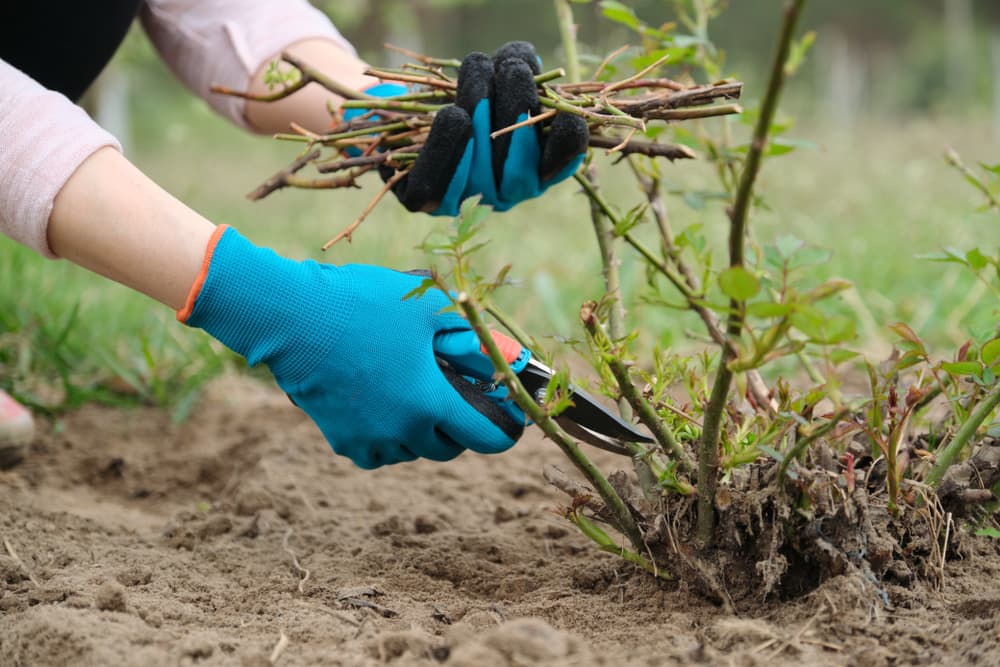
The most important thing to remember is that pruning should largely be undertaken not for aesthetics but for plant health as a primary consideration.
Pruning roses can help to keep your roses happy and healthy.
“Don’t be afraid of making mistakes,” says Colin Dickson, Owner of Dickson Roses.
“Roses are difficult to kill by pruning.”
Reducing Size
You may prune roses to restrict their size, where they are vigorous and have outgrown their location.
Reducing or restricting the size of roses can help them to be good neighbours to other plants, and can also make sure that they do not want for water and nutrients in the position they are in.
Remove Dead Or Diseased Growth
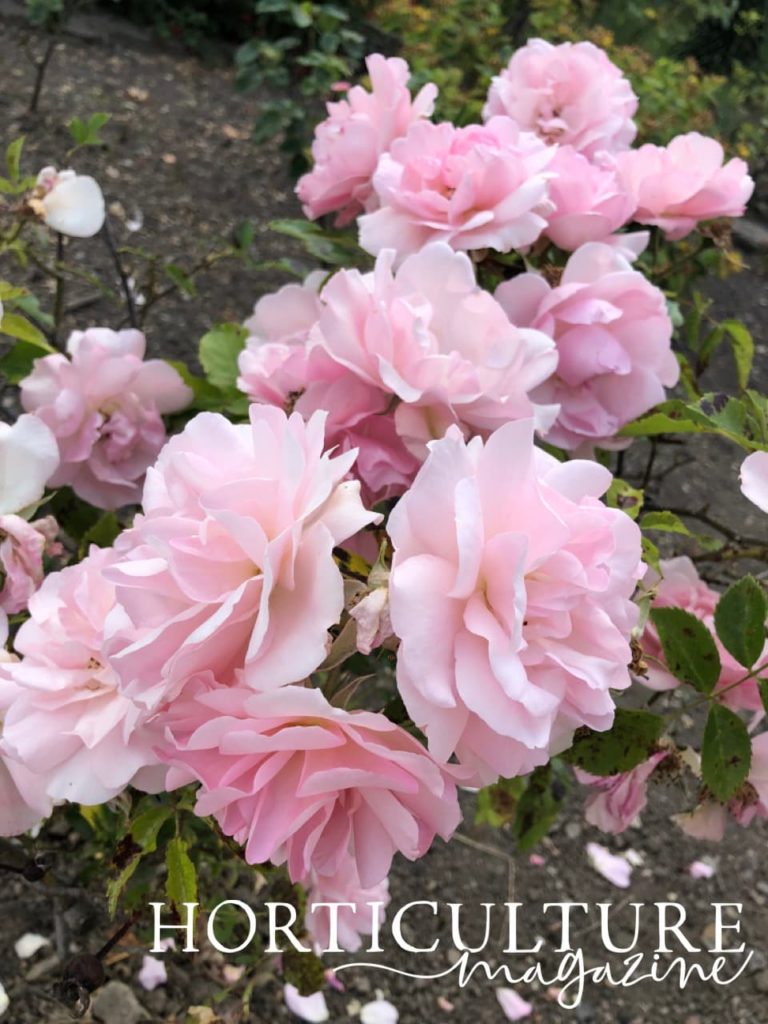
Cutting out old, poorly flowering wood on established roses can help promote healthy new growth which will flower better.
Often, in pruning, your first goal will be to remove dead, damaged or diseased material.
Of course, this not only promotes good flowering but can also prevent further damage or disease.
Promote Airflow
Another key goal when pruning roses is to prune out spindly or crossing stems so as to create a framework of well-spaced stems that allow air to flow freely around them.
“Cutting out an older stem can open up the rose and encourage new growth from the bottom,” says Ben Stirton from Country Rose Gardens.
“Don’t be sentimental or nervous, if you over prune it will soon grow back!”
Good airflow reduces the chances of diseases taking hold.
When To Prune Roses
“I would say that there are two main pruning times,” says David Allison, Vice Chairman of the RHS Fruit, Vegetable & Herb Committee.
“In late autumn after flowering has finished, you can carry out a light prune to reduce the overall height of the plant.
“Then, in early spring whilst the plant is still dormant, prune out any dead, diseased, weak or crossing stems and, depending on the variety, carry out a hard prune to a dormant outward facing bud.
“It’s generally better to have 4-5 strong main stems rather than a lot of weaker ones.
“This dictates the shape and size of their plant for the forthcoming flowering season.”
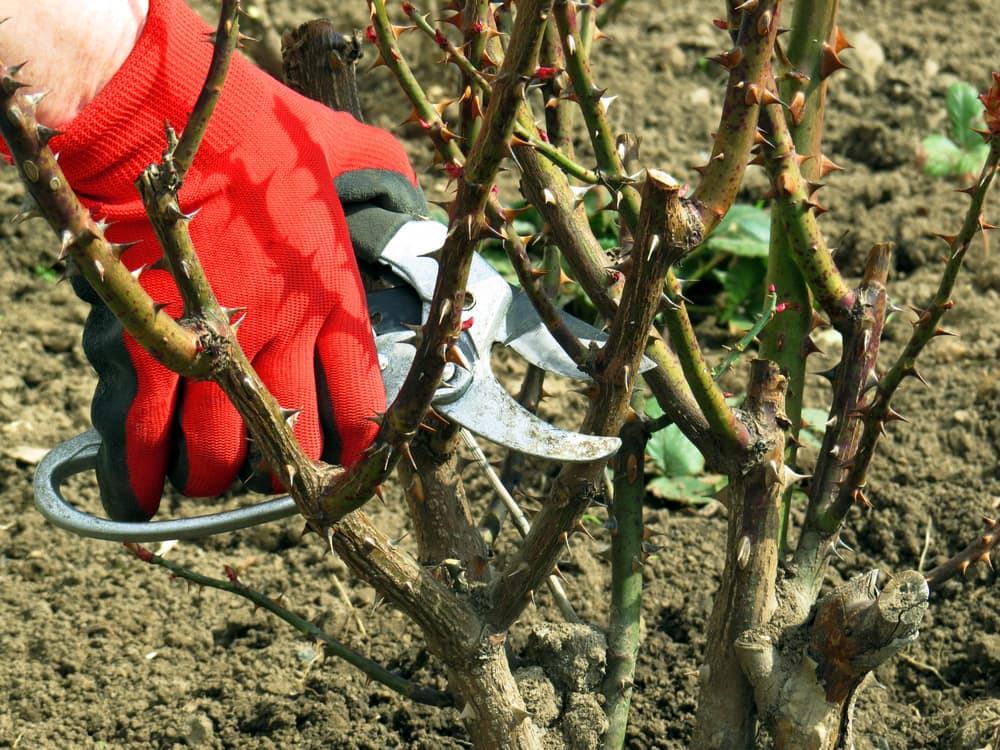
Generally speaking, late winter/early spring in February or March is typically stated as the best time to prune roses.
However, as you will discover below, pruning guidelines differ depending on which type of roses you grow, so we’ll explore when to prune roses in more depth a little later in this guide.
“Doing your main pruning in March as generally recommended is far too late and will delay flowering in summer by 6 weeks,” warns Chris Styles from Style Roses.
Equipment & Tools
To prune roses, you may simply need a sharp and clean pair of secateurs, a pair of gloves and a top with long sleeves to prevent injury from thorns.
For more mature roses, however, you might require gardening shears, loppers or a pruning saw, depending on the thickness of the branches.
Rose Pruning Tips For Beginners
How and when you prune depends on the type of rose you are growing.
However, there are a few key rules that it can be useful to bear in mind when pruning your roses at all, as Philip shares:
“Start by removing any dead, diseased or damaged growth. After, thin out the centre of the plant.
“Cut the remaining stems back by about two-thirds.

“Half is fine and more than two-thirds is fine – just leave a shape you like. You can then move on to the next one.”
Always make all cuts with clean, sharp secateurs or other tools on larger branches.
“The thicker the stem, the less you need to cut back,” shares Colin.
“I always tended to prune quite hard to encourage new growth.”
“I’m a hard pruner too,” adds Colin Skelly, a Horticultural Consultant.
“I prefer to stimulate new growth and try to avoid top heavy roses. Everyone is different though, and will develop their own penchants when pruning roses.
“The important thing is to understand the type of rose you have and the generally accepted rules for pruning them. You can then explore the boundaries of these rules from your own experience.”
Stewart Pocock, the owner of Pocock’s Roses, agrees with this method, adding:
“The general rule of thumb is the stronger the growth, the less hard you prune and the weaker the growth, the harder you prune.”
Identifying Your Rose Type
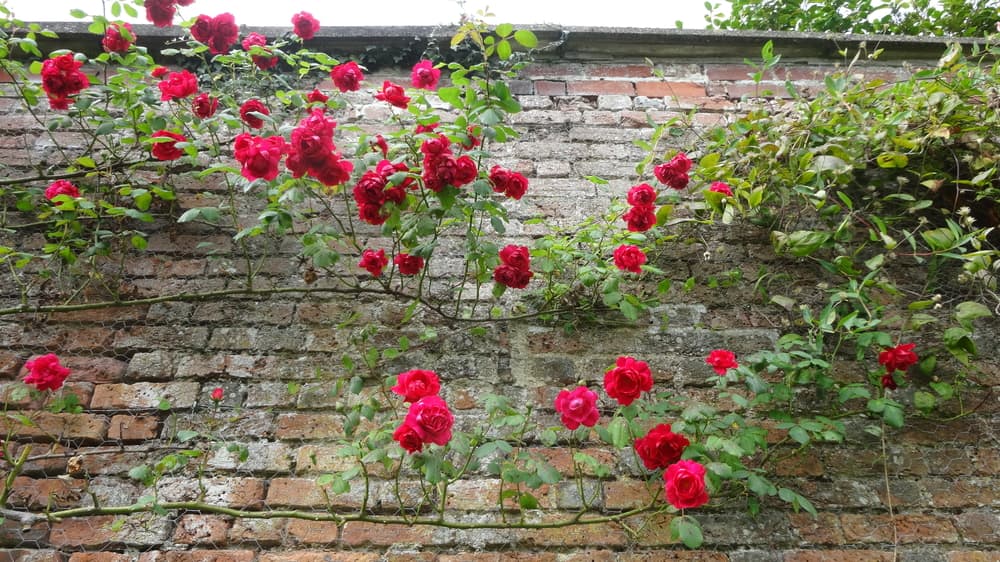
In order to prune roses, it can be helpful to work out what kind of rose you have.
Roses are divided into the following categories in terms of their pruning requirements:
- Climbing
- Rambling
- Shrub
- Hybrid Tea and Floribunda
- Patio (Miniature)
- Ground-Cover
If you are not sure what type of rose you have, you can still get started with pruning.
First of all, determine whether you have a rose which is very tall or needs some sort of support.
If you do, it is most likely to be a climbing or rambling rose.
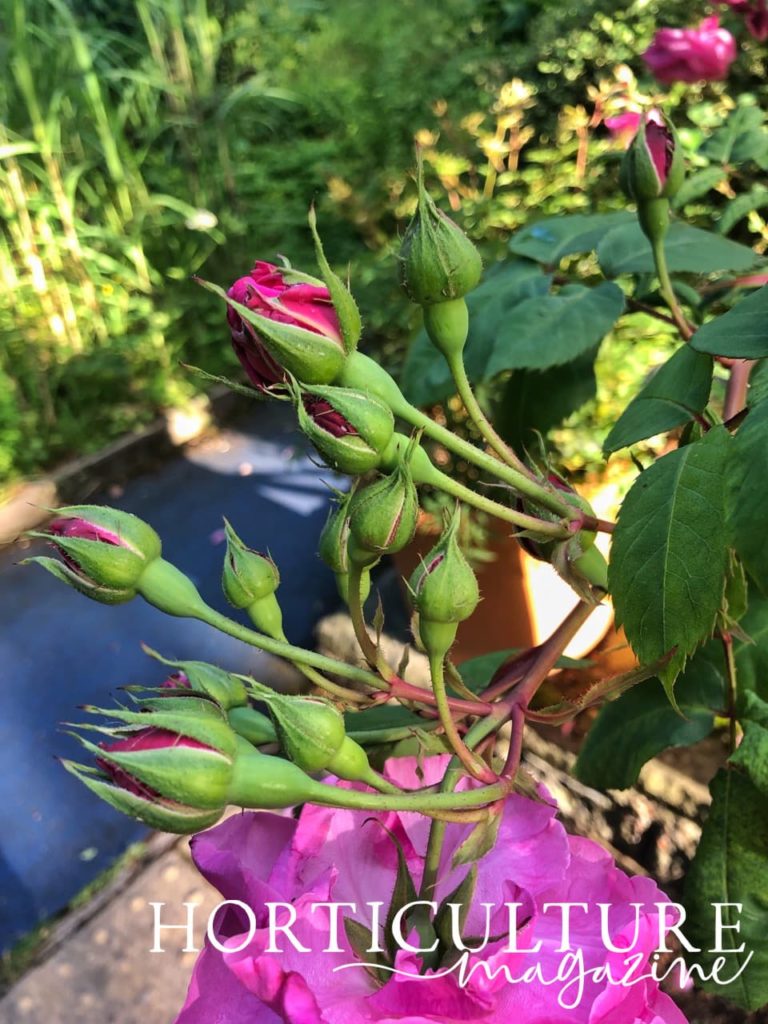
If your rose is not a climber or rambler, it may be more difficult to work out which type you have.
Patio or miniature roses and ground cover types are easily recognised by their size and growth habit.
But if you have a larger rose, it might be hybrid tea or floribunda, or a type of shrub rose.
How To Prune Roses
If you are not sure which rose you are growing, you can prune carefully in February or March.
What happens next will help you to work out which type of rose you are dealing with.
Climber Or Rambling Type
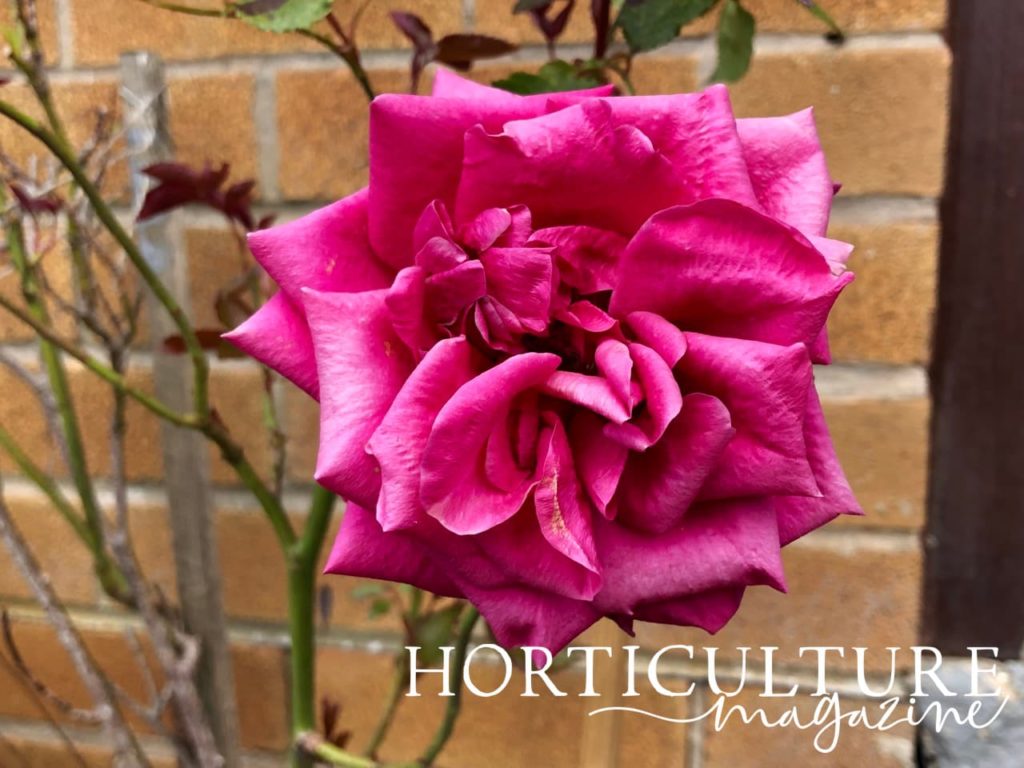
If you have a taller or supported rose, careful pruning can help you to work out whether it is a climber or a rambler.
If the rose has a large, mature single old stem emerging from the ground, prune gently as it may not grow back when cut back hard.
Shorten it by no more than one-third to one-half.
If your rose has multiple stems, take out a couple of the oldest-looking stems (with grey, flaky bark) as close to the ground as possible.
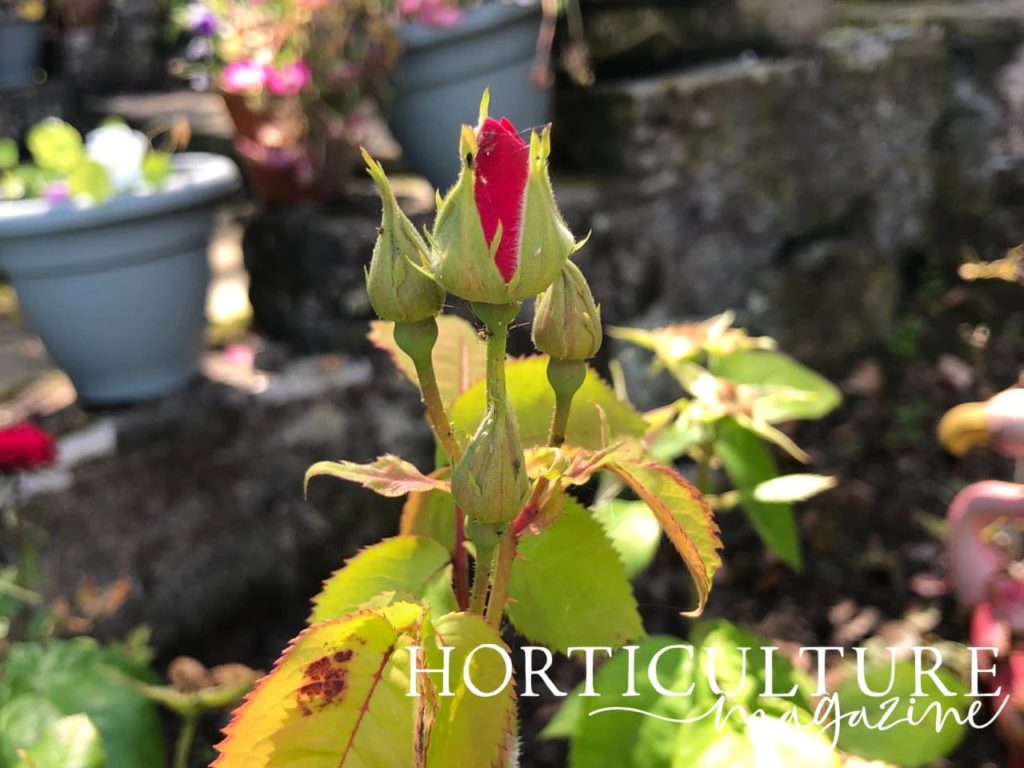
The plant’s response the following season should let you know whether it is a rambler or a climber:
- If it is a rambler, it is likely to send out a lot of non-flowering shoots.
- If it is a climber, it is likely to respond with less vigorous but flowering growth.
Climbing roses typically repeat flower throughout the summer and into autumn. In contrast, rambling roses will usually bloom once, typically in June.
If you know which you have, more precise pruning technique and timing is recommended.
Climbing roses are typically pruned between late autumn and late winter.
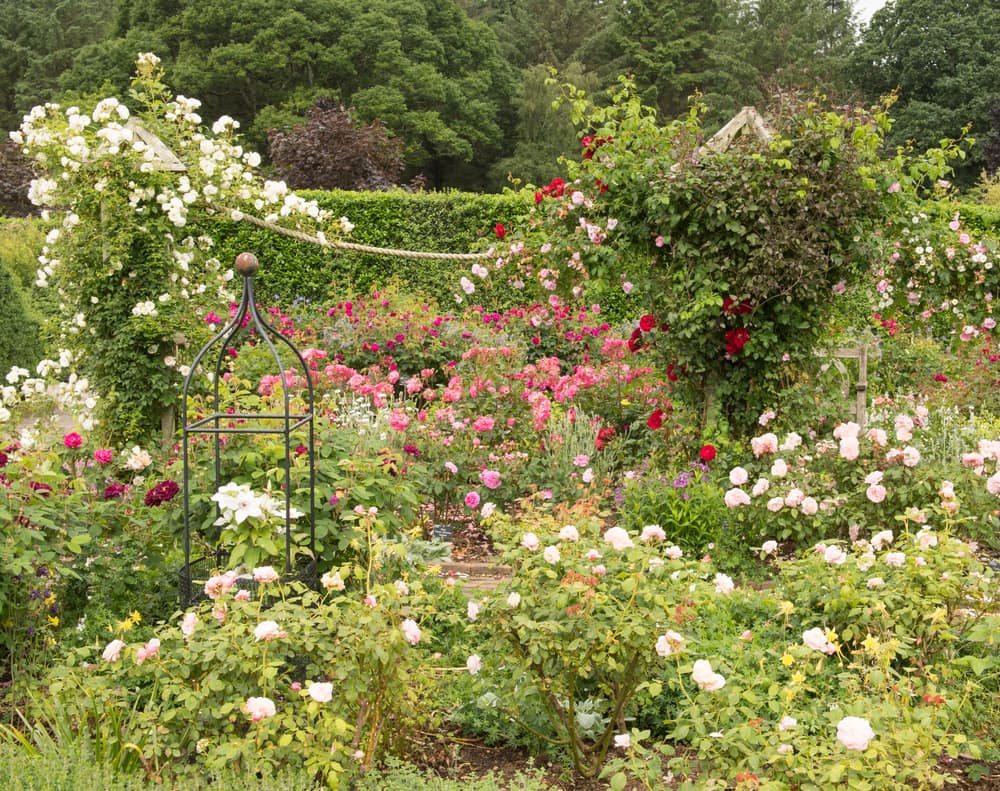
Routine pruning involves removing any material that is dead, damaged or diseased, tying in new shoots to supports, cutting back flowering side shoots by two-thirds of their length, and cutting out really old stems at the base to promote new growth if the plant is congested.
Rambling roses are ideally pruned in late summer.
When the supports have been covered, these roses should be pruned by removing one in three of the oldest stems to ground-level.
Where space is restricted, all flowered stems might be pruned out and new shoots tied in. Finally, side shoots are shortened by around two-thirds of their length.
“Ramblers have different requirements, especially those that do not repeat flower and only have one big intense period of blooming that lasts 6-8 weeks,” shares Philip.
“Most of the non-repeating roses flower on old wood, so if you cut that out, there will be no flowers the following summer.”
See a more in-depth guide to pruning climbing roses here.
Shrub Or Bush Type
With shrub or bush types, you can also get some clues through pruning as to which type you have.
Again in February or March, take out a couple of stems as close to ground-level as you can and shorten the remaining stems by around a third.
If vigorous regrowth occurs the following season, flowering well, it is likely that you have a floribunda or hybrid tea rose.
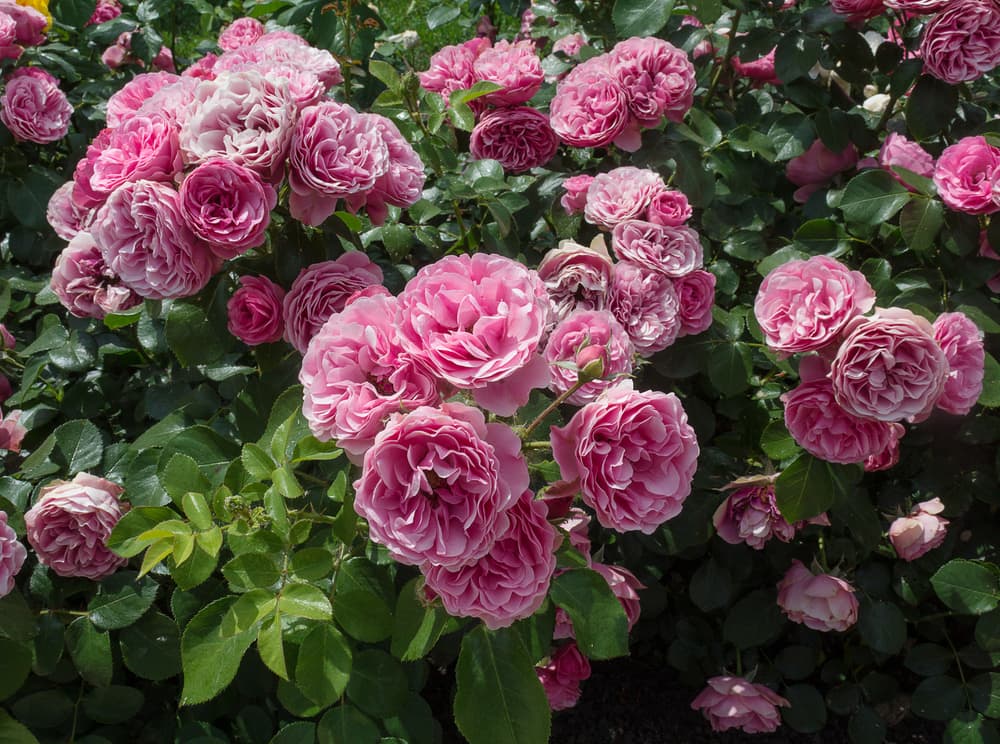
If it does not, it is more likely to be some kind of shrub rose.
Pruning is more or less the same for floribunda and hybrid roses, but floribunda are left with longer stems with more buds on them.
This is to allow for the mass of blooms they generate.
“Floribunda and Patio roses need regular deadheading and light pruning to keep an open structure and increase airflow,” says Ben.
“You should be able to see through the plant.”
“Hybrid Tea & Floribunda Roses need cutting down to 30-45cm, whilst Shrub & English Roses should be cut back to around 60cm,” Chris recommends.
Hybrid tea roses are pruned lower to encourage new shoots, as Ben shares:
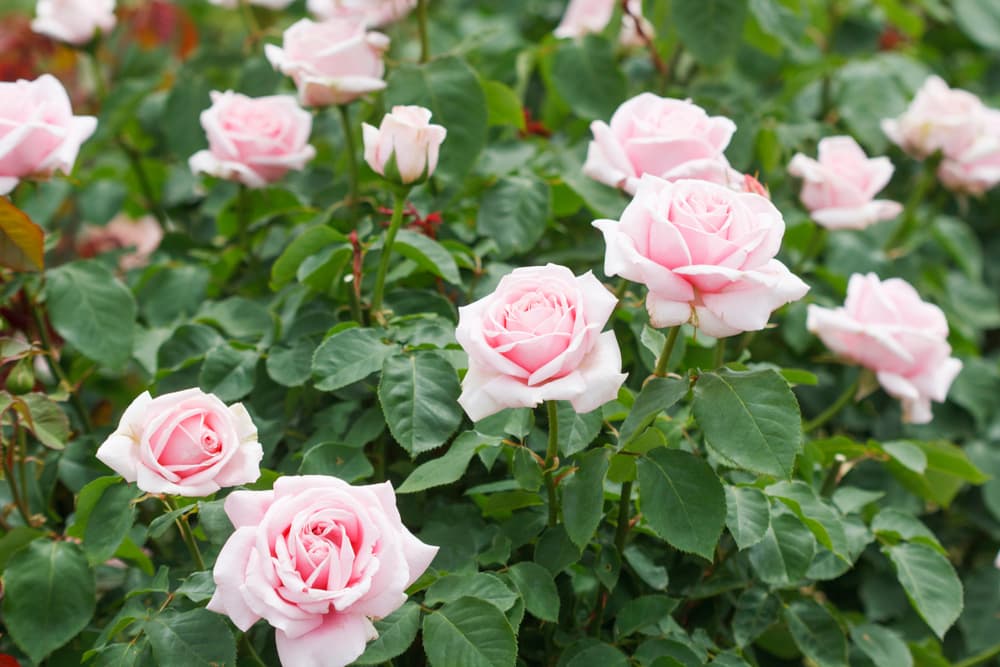
“Hybrid tea roses need to be cut back quite hard to encourage new growth from the bottom otherwise you end up with leggy plants with flowers all at the top.”
“Shrub roses can be treated like bush roses, but don’t cut so hard,” says Philip.
“You can even just tidy up for a year or two and give a harder prune every second or third year if you like a big bushy natural look to them.”
As Philip says, shrub roses typically flower on older stems and should usually be allowed to develop more naturally with lighter pruning.
Simply aim to remove dead, damaged or diseased material and prune lightly to create an open structure, removing older unproductive branches to make way for new growth.
Deadheading
“Regular deadheading is a must during the season to prolong flowering,” says Ben.
Repeat flowering rose types should be deadheaded to encourage further blooms. And any roses can be deadheaded simply to improve their appearance.
“During the flowering season, prune out any flowers and stems that have gone over,” says David.
“Alternatively, cut flowers for your house, to encourage repeat flowering and to promote visual impact.
“Afterwards, remove all pruned material to avoid any disease build-up.”
However, it does not pay to be too zealous in deadheading as if you remove all faded flowers, you won’t allow the hips to form.
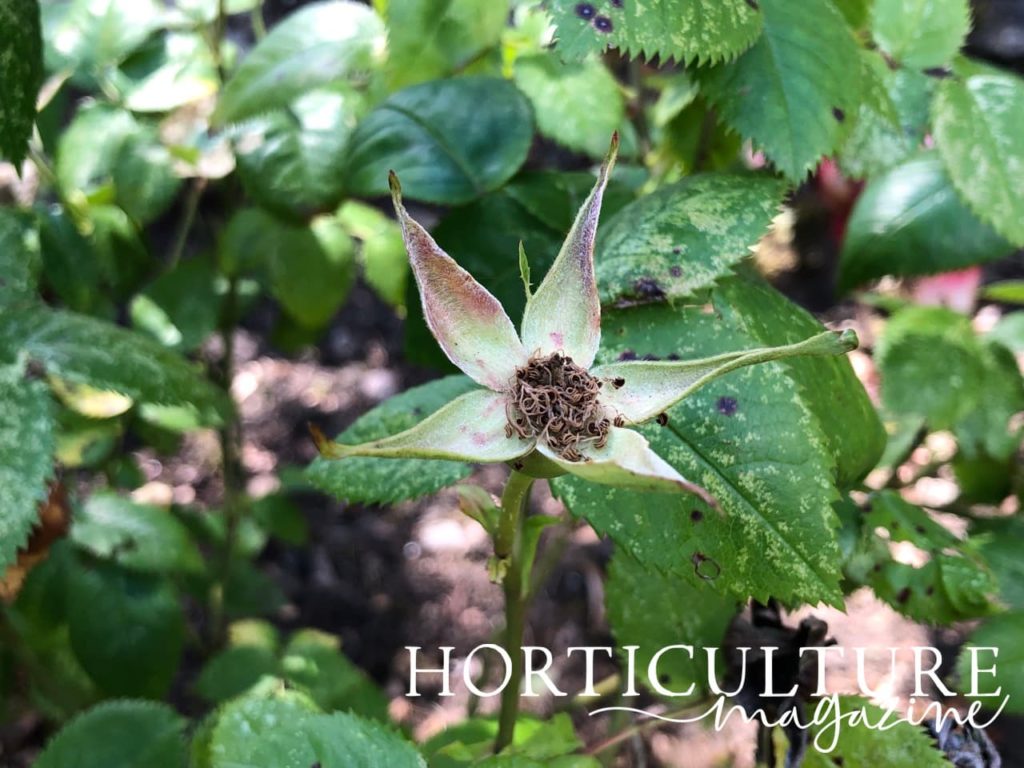
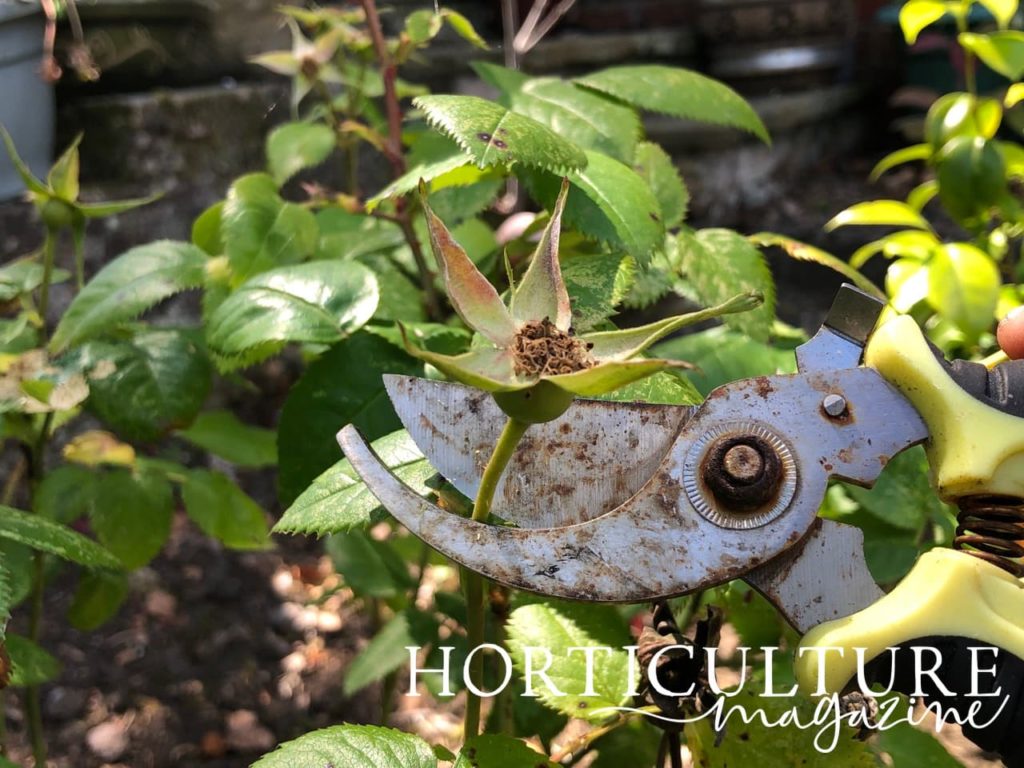
And on many types of roses, hips can be beautiful, and also provide an interesting and healthy edible yield.
Care After Pruning
After late winter or spring pruning, roses should always be mulched well with a thick layer of organic matter such as a good quality homemade compost, leaf mould, or well-rotted manure.
It is also a good idea to feed all pruned roses in spring with a balanced organic fertiliser.
